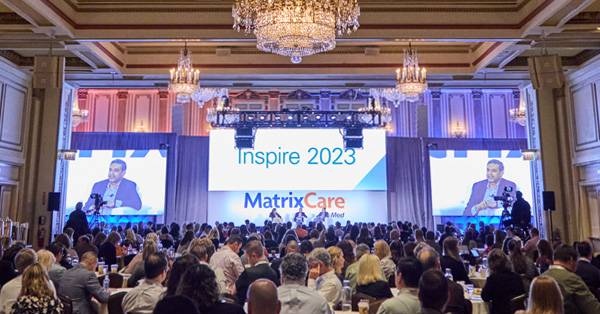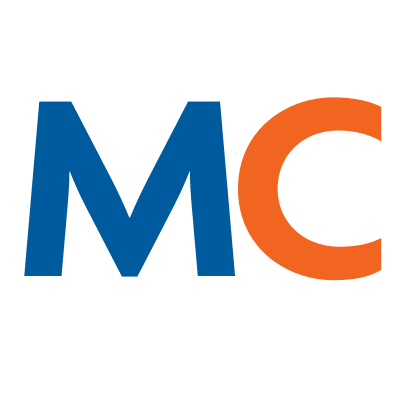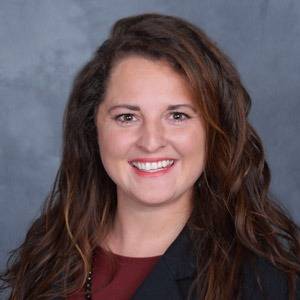- Solutions
- Solutions
- Home Health
- Hospice
- Life Plan Community
- Palliative Care
- Private Duty
- Senior Living
- Skilled Nursing
- Skilled Nursing
- Skilled Nursing Software
- Advanced Insights
- Customer relationship management
- Data and analytics
- Financial & operations management
- Marketing
- Nutrition management
- Referral management
- Regulatory compliance
- Retail management
- Resident engagement
- Revenue cycle management
- Skilled nursing interoperability
- Partners
- Blogs
- Resources
- About
- User Conference

Connecting care through smart EHR integrations
In post-acute and long-term care, teams must do more with less. They face the challenge of providing high-quality care while handling overwhelming administrative tasks. Your EHR is the foundation for clinical documentation and resident care, but what if you could use it for more?
Disconnected workflows, manual data entry, and isolated systems create inefficiencies and compliance risks. The solution lies in moving beyond standalone EHR functionality to create care that’s more connected.
Smart EHR integrations can help organizations get more from their EHR. They can connect teams and create a more flexible, scalable future. When systems communicate, staff spend less time on manual tasks and more time on resident care. To learn more about the power of smart integrations, we’ll dive into:
Connectivity challenges and trends
Many providers still use separate systems, creating extra complexity and risk. They often find themselves stuck in a cycle of manual data entry and switching between systems. This leads to many critical issues that can impact operational efficiency and overall care quality.
With staff shortages and increasing workloads, integrated workflows are more than a convenience, they’re essential for operational resilience. From managing claims and billing to coordinating care, inefficiencies can delay care and impact revenue. As care models change, organizations must use real-time data to meet quality measures and improve outcomes.
Disconnected systems can lead to data gaps, redundancies, and compliance issues. This can impact resident safety and the operational performance. One-size-fits-all technology can’t always meet changing needs, leaving organizations stuck with outdated workflows or costly reimplementation.
EHR integrations improve your current system. They help you tackle these challenges, without having to start over with a new platform.
What integrations are and how they work
An integration is a secure connection between your EHR and another system. It allows them to work together to share data in real time. Behind the scenes, they use APIs and other technologies to automatically sync data without extra work for your staff. They should feel seamless—like one unified system.
EHR integrations span the full spectrum of operations and care. Clinical integrations include tools that help manage documentation, compliance, and care coordination. Operational integrations include tools to support admissions, staff management, and product inventory. Financial integrations include tools to help manage claims, payments, and your revenue cycle.
With the right EHR integrations, you can get the support you need for your entire business. Instead of switching platforms when your needs change, you can add connected tools that enhance your EHR’s capabilities.
Don’t let these common myths fool you:
- They’re too complex. Modern integrations are often designed for simplicity and leverage automation to make them easy to use.
- We’ll lose control of our data. Properly configured integrations follow strict HIPAA and encryption compliance to ensure the sharing of data is secure.
- We don’t have time for training. Many integrations reduce the need for training by fitting into existing workflows, with minimal downtime during implementation.

The transformative benefits of smart integrations
When organizations implement strategic EHR integrations, the benefits extend beyond any single metric or workflow. Connected systems help staff spend less time on documentation and more time with residents. Real-time information strengthens clinical decisions. Coordinated care improves outcomes and engages residents and their families.
Other benefits the right integrations can offer include:
- A shared source for resident data Integrated solutions sync with the EHR in real time. This helps improve interoperability, reduce errors, and ensure everyone, from care to billing, is working from the same updated information.
- Fewer logins, faster workflows When tools are connected, staff spend less time switching between systems and more time focused on care.
- More effective collaboration across teams Integrated systems support coordinated care planning, improved compliance documentation, and a smoother transition between teams and care settings.
- Smarter more efficient workflows Automated data exchange and retrieval reduces manual tasks, duplicate entries, and errors. Less administrative burden means staff can focus more on providing exceptional resident care.
- Build a tech strategy that grows with you Connected solutions make it easier to upgrade or add capabilities without overhauling your entire system. You can add new solutions as your needs evolve with the flexibility to choose the tools that offer the best support.
Building your connected care ecosystem
For organizations just beginning their integration journey, the path forward starts with small, strategic steps. For those who aren’t, the focus should be on refining how systems connect to experience all the benefits. No matter where you are in the process, here are steps to take that can help strengthen care connectivity using EHR integrations:
- Assess your current tech landscape
Conduct a tech audit to identify disconnected tools, manual workarounds, and any overlapping features or inefficiencies.
- Define your organizational goals
Is your priority improving compliance, scaling operations, or enhancing resident outcomes? Is it a combination of those or something else? Your goals should guide your integration strategy.
- Implement the right integrations
Choose tools that not only integrate smoothly with your EHR but also offer proven use cases, strong support models, and seamless implementation.
- Ensure data security and compliance
Look for integrations that adhere to HIPAA guidelines and include features like user-access controls, encryption, and audit trails.
- Plan for staff onboarding and long-term adoption
Even the best tools won’t deliver value if they’re not used fully. Look for user-friendly solutions with intuitive workflows, role-based dashboards, and ongoing training resources.
Connecting the dots across your systems
Your EHR is more than a documentation tool, it’s the core of your organization’s digital infrastructure. And you can help it do more by integrating the right tools that empower your team to coordinate care effectively and make more informed decisions.
The technology exists today to transform how your organization delivers care. The question is no longer whether to integrate, but how quickly and strategically you can implement these capabilities. With thoughtful planning and the right partners, you can connect your systems to better support your current needs and future growth.
Discover what’s next through the Partner Marketplace
With MatrixCare’s Partner Marketplace, you can explore hundreds of integrated solution providers designed to extend the value of your EHR. Whether you want to simplify billing, improve communication, enhance compliance, or automate manual workflows, the Marketplace offers tested solutions tailored to your care setting.
Not sure where to begin? Tools like integration report cards and consultative support can help you evaluate your current ecosystem, uncover gaps, and make confident decisions about your next steps. Just contact our experts to learn more or to get started.
If you’re a solution provider looking to be a part of the Partner Marketplace, apply to join and tell us more about your solutions and services.
Eric Silverman and Dudley Fetzer
Dudley is Senior Director of Business Development at MatrixCare, where he spearheads strategic partner relationships across senior living and long-term care. As an industry veteran, he’s spent the last three years at MatrixCare expanding our ecosystem of technology and service collaborators. Before joining MatrixCare, Dudley was a licensed administrator for a large skilled nursing home operator in California.
Eric is Vice President of Technical Services at MatrixCare, bringing more than 25 years of technology experience, including over 15 years in long-term and post-acute care across both provider and vendor roles. Previously Associate Vice President of Client Services for MatrixCare's Senior Living Business unit, he joined through its acquisition of Right Click Software where he served as Vice President of Client Services. Earlier in his career, Eric held tech leadership roles at Signature Senior Living, Assisted Living Concepts, VCPI, and Southwestern Bell. He has a BBA from the University of North Texas and multiple technology certifications.
Related Posts

See MatrixCare in action
Start by having a call with one of our experts to see our platform in action.
MatrixCare offers industry-leading software solutions. Thousands of facility-based and home-based care organizations trust us to help them improve efficiency and provide exceptional care.
© 2025 MatrixCare is a registered trademark of MatrixCare. All rights reserved.







